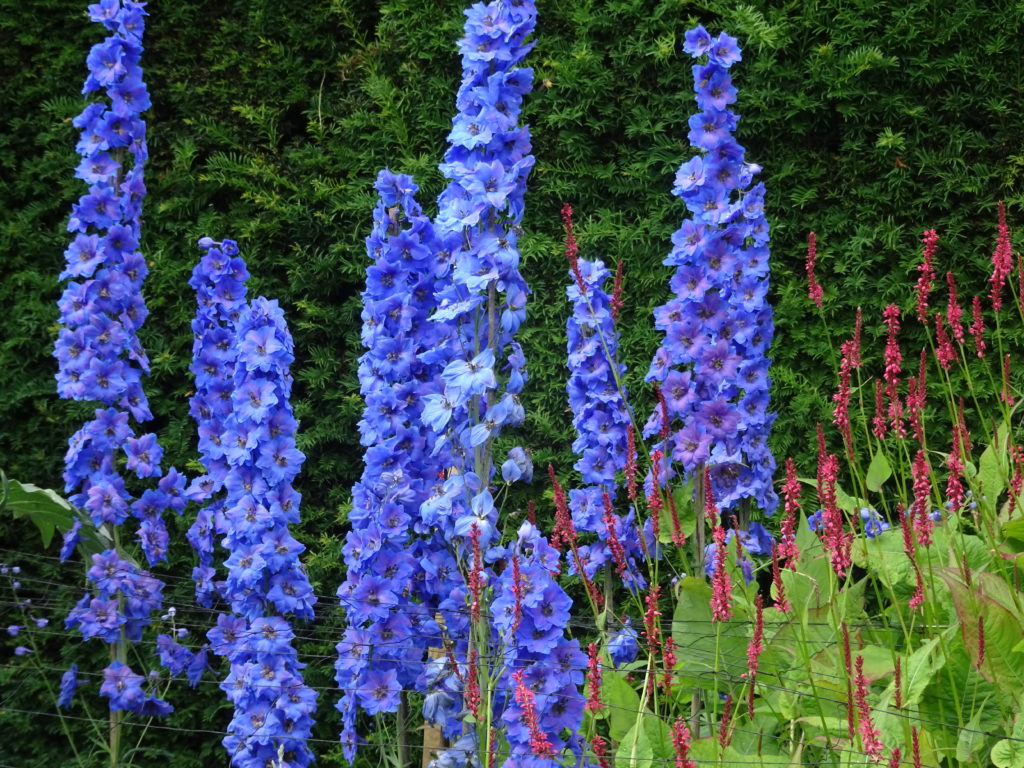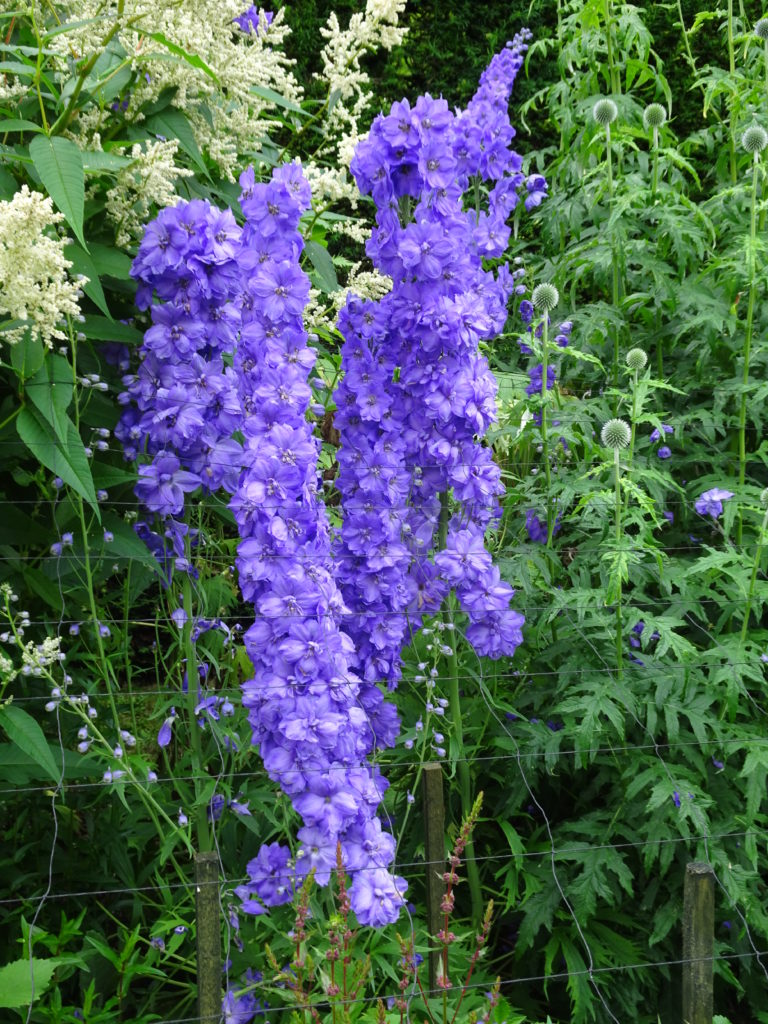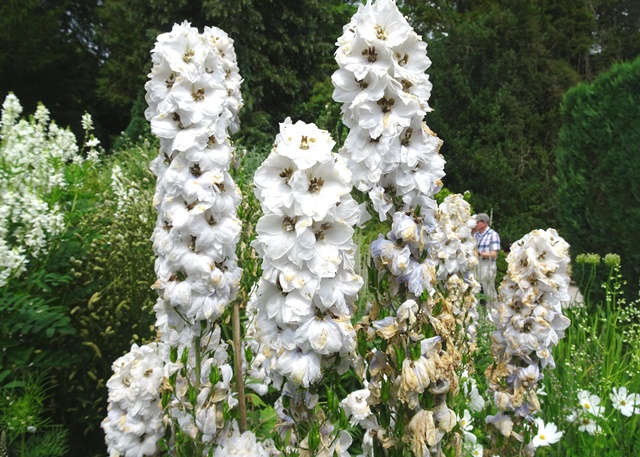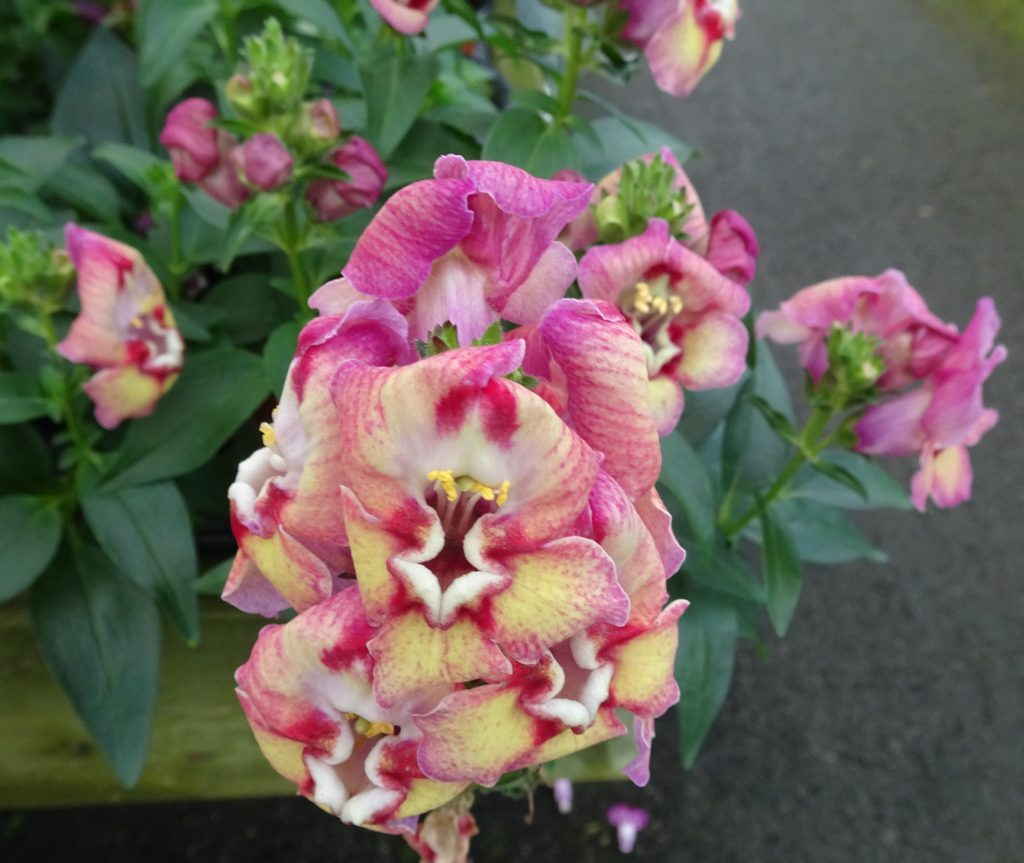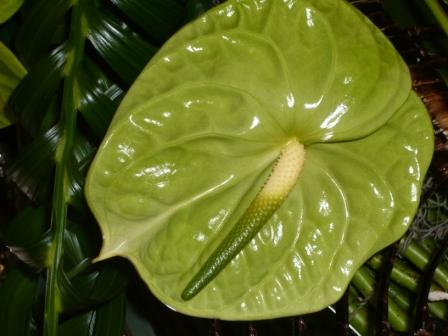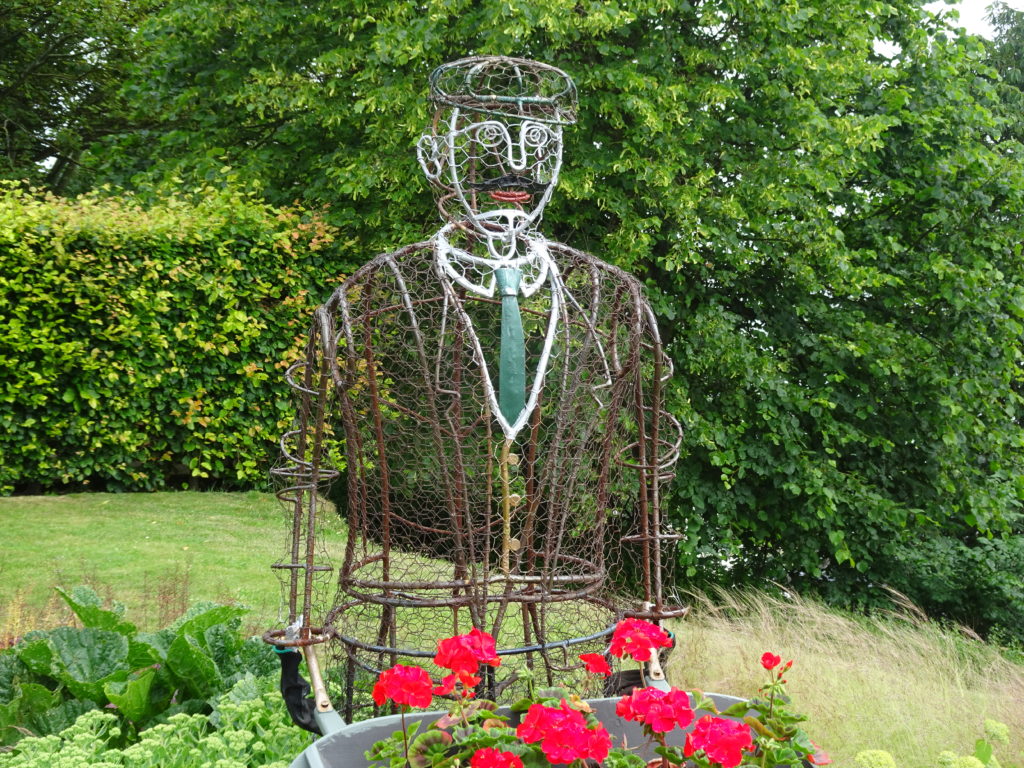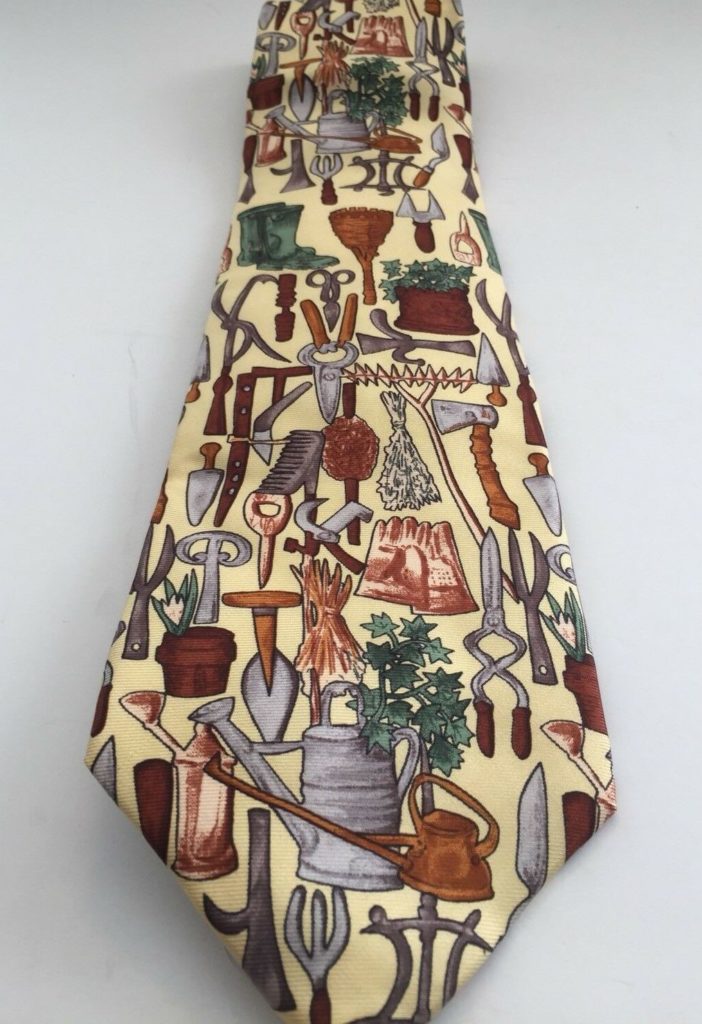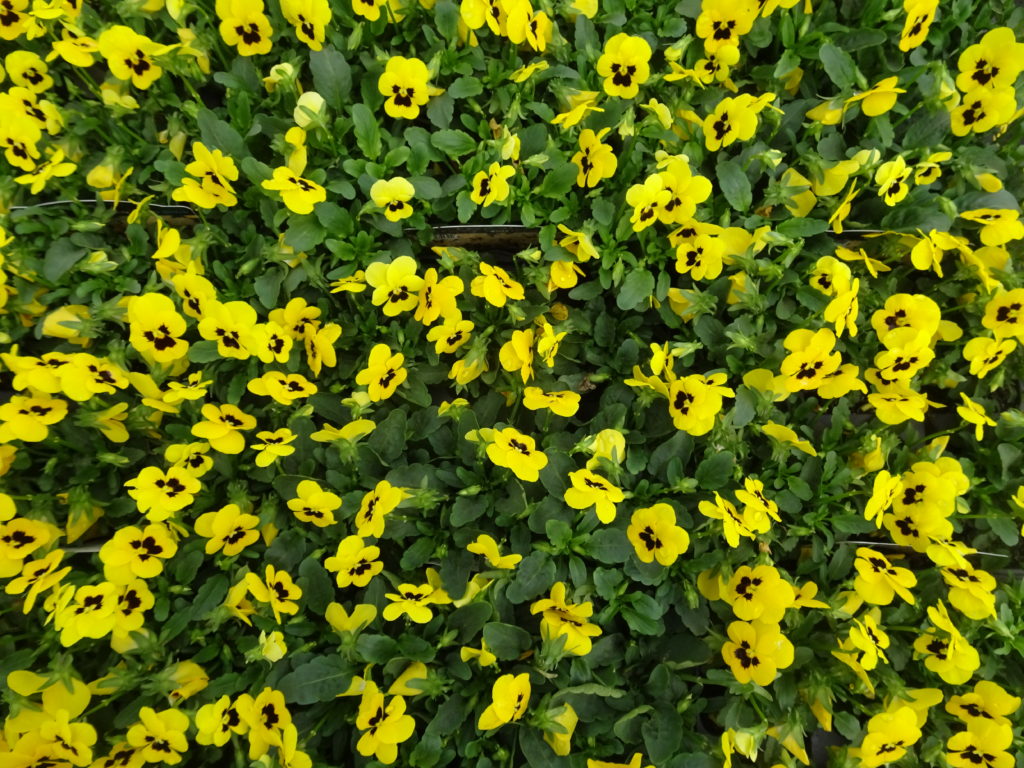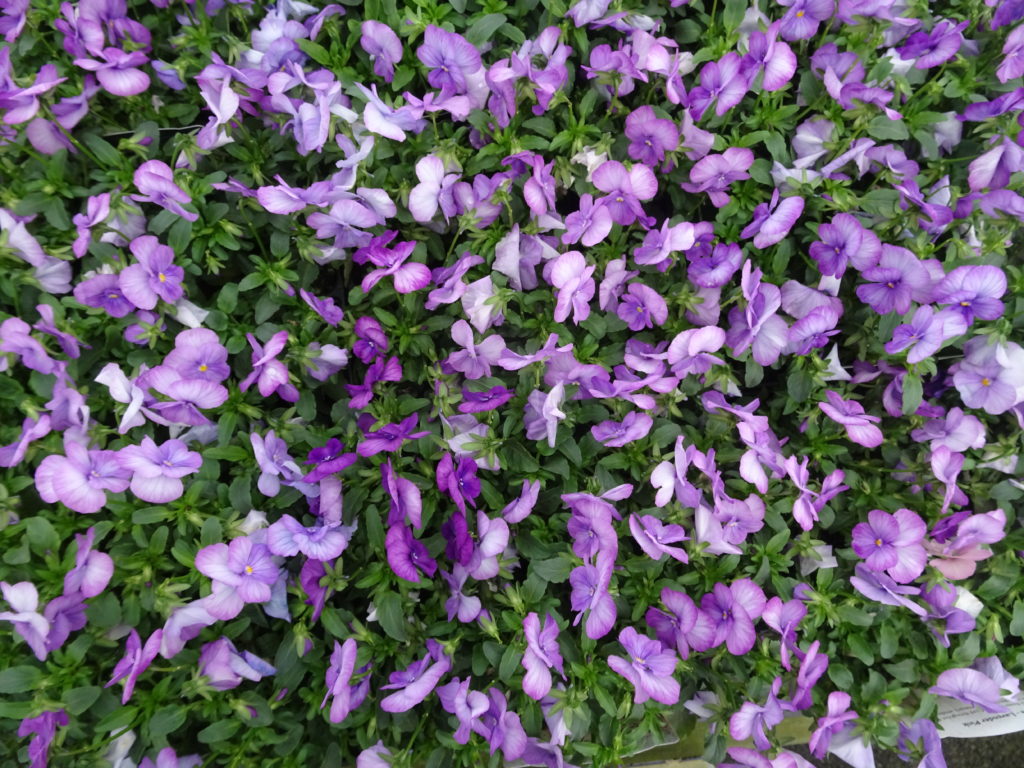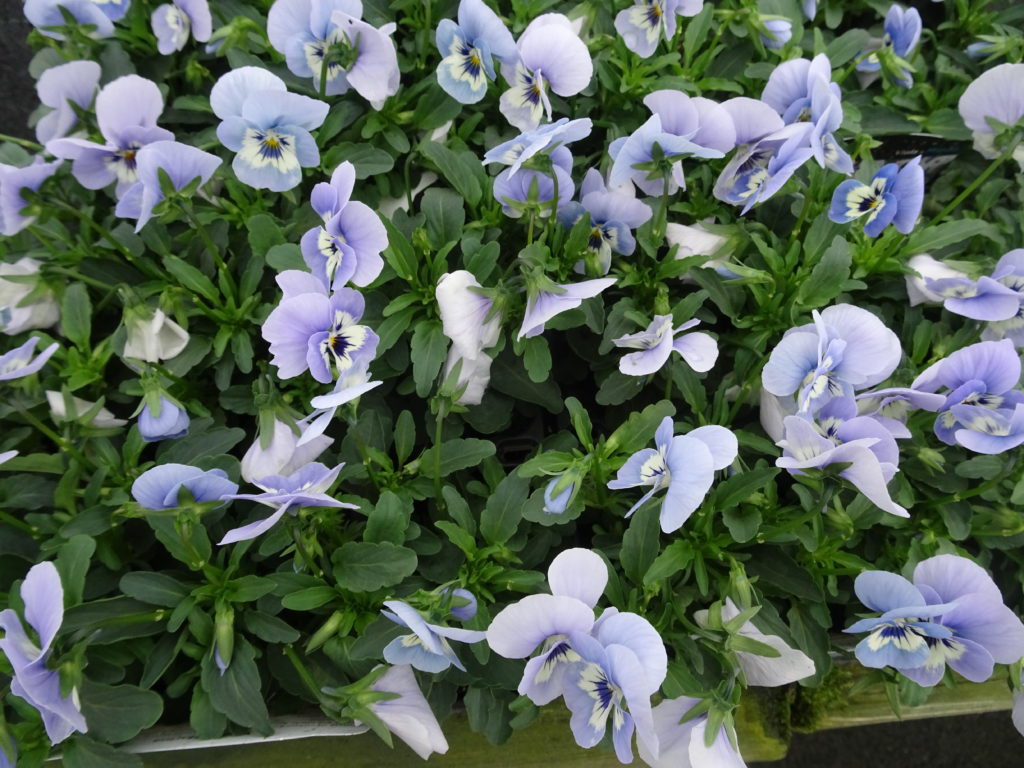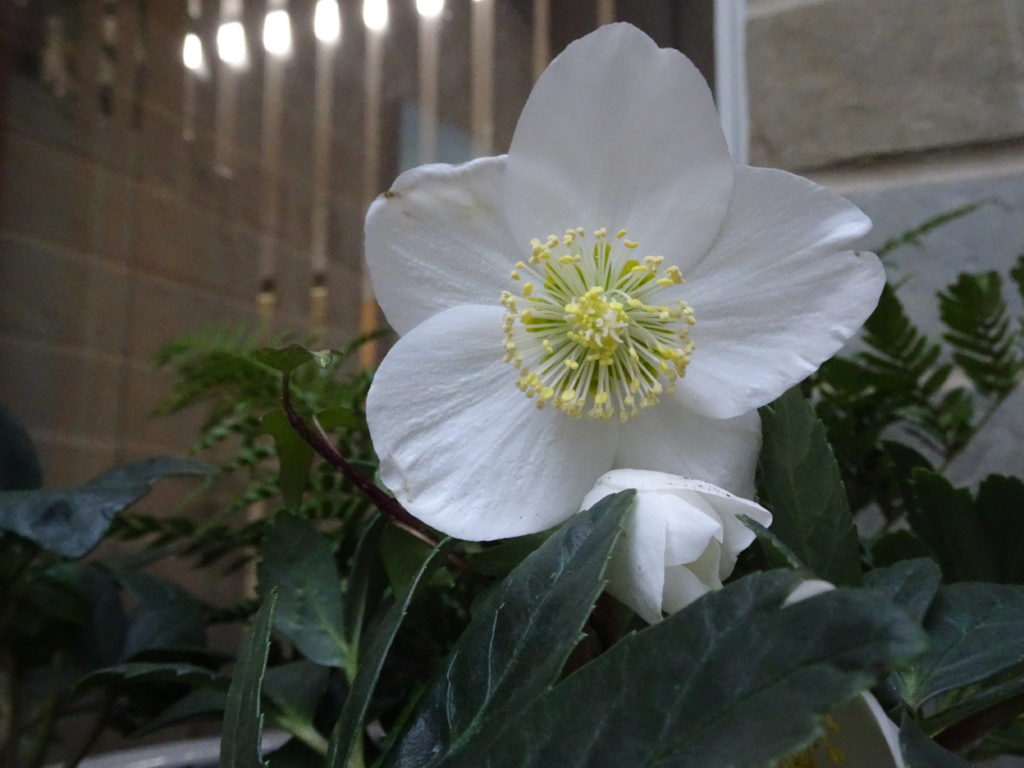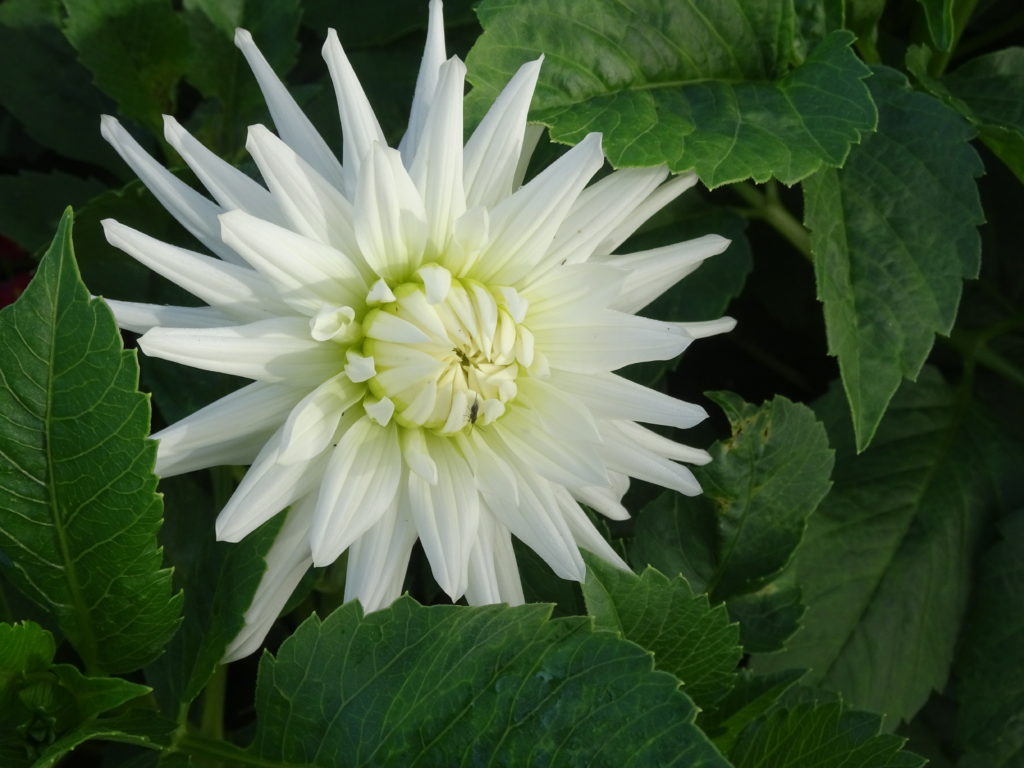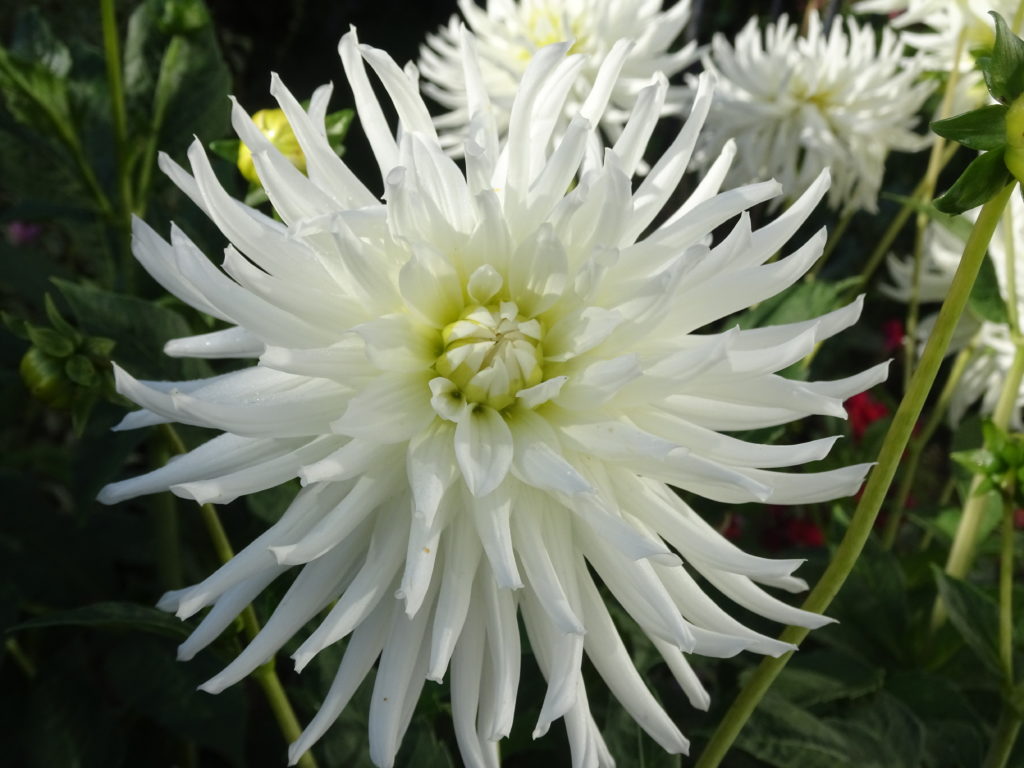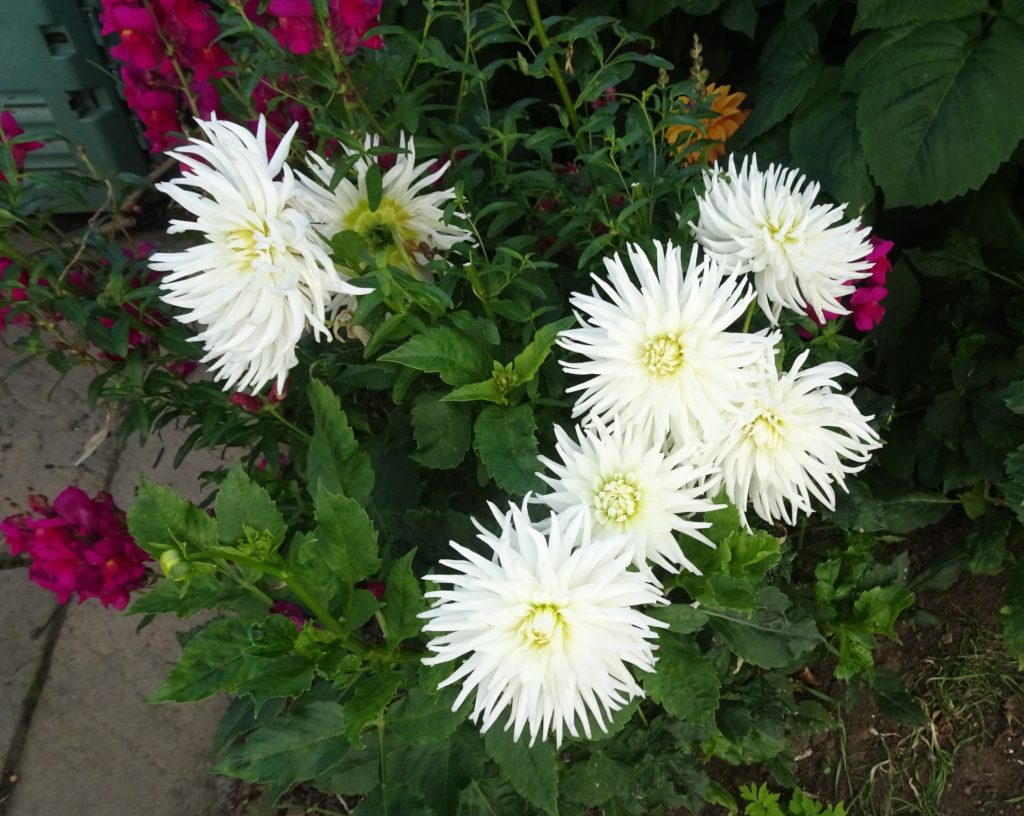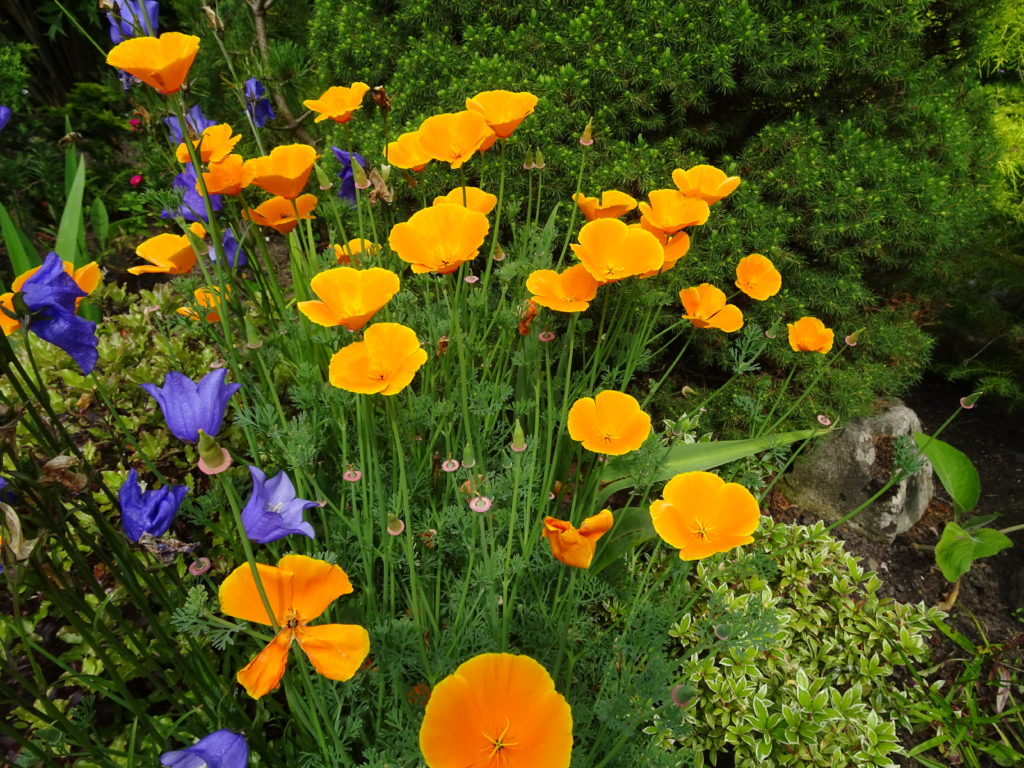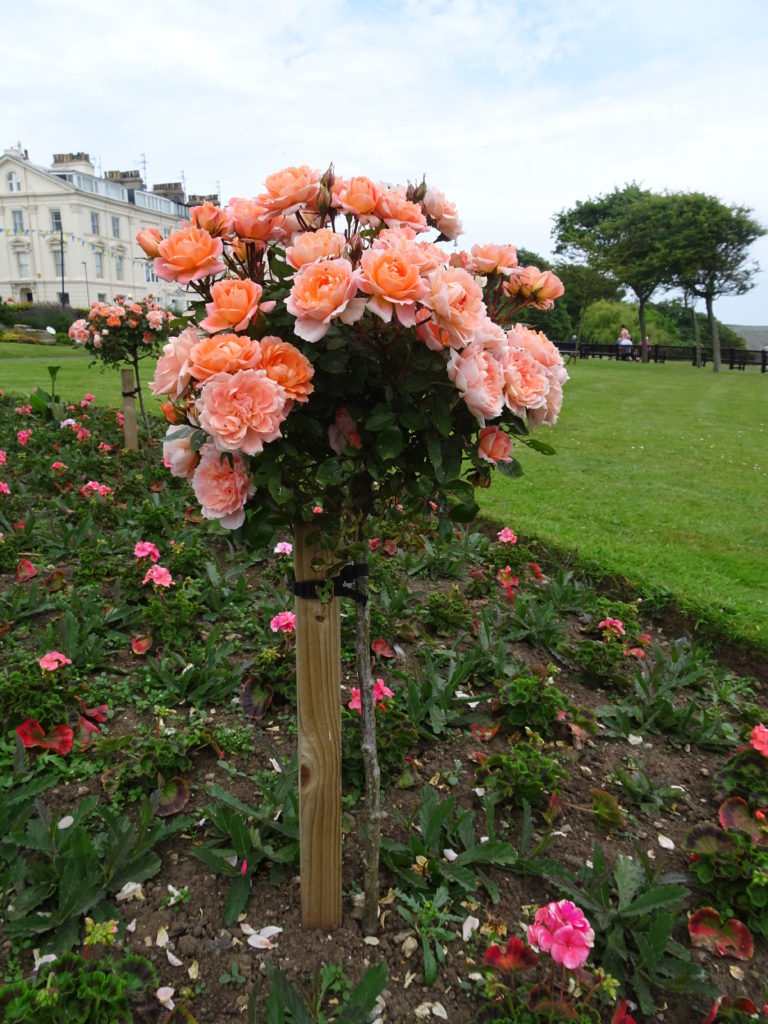Blood Red Phlox

This could be an old variety old variety ‘Brigadier’ from pre WW ll. It has strong colouring with vivid pink-red flowers and a striking magenta eye. Like most paniculata varieties it has a good fragrance.
If the plant has been maintained for 75 plus yaers it will have been replicated from cuttings many times as most phlox are comparatively short lived herbaceous plants. Root clumps can be split with high levels of success. Alteratively stem or root cuttings should thrive.
Other Red Phlox paniculata
- Red Riding Hood
- Sandra,
- Volcano red,
- Red Super
- Star Fire
Other Red Phlox
- Red Drummondii Drummond annual
- Phlox ‘subulata’ Creeping Moss’
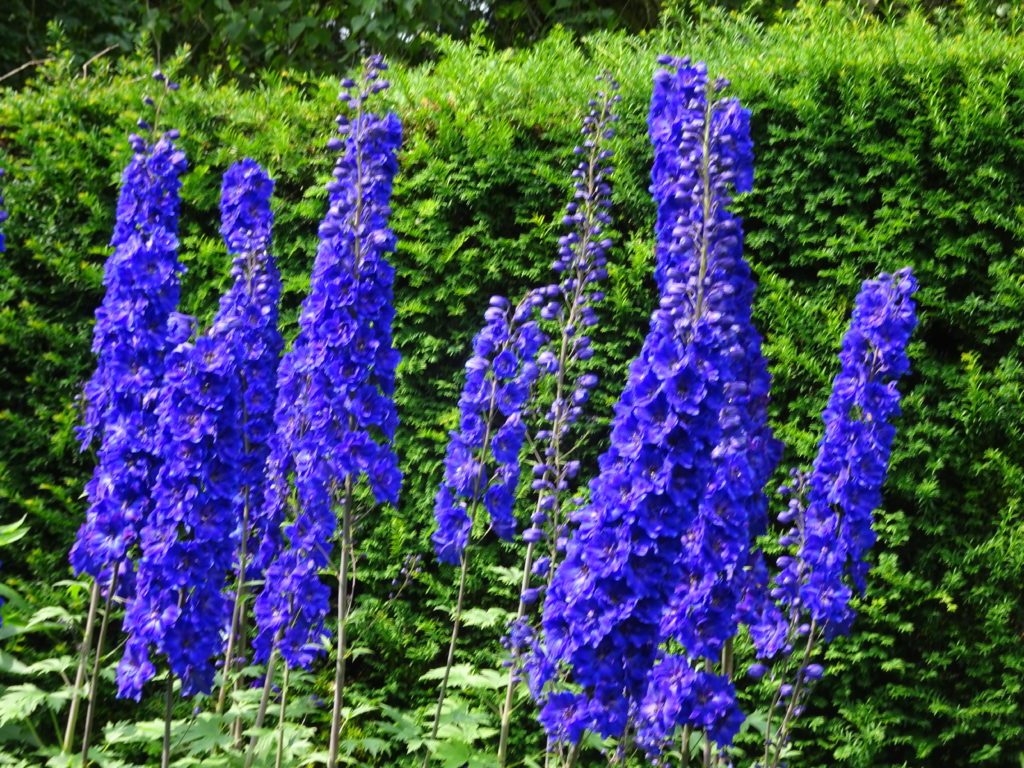 Stately and statuesque, the blue Delphinium is one of the best tall features in a herbaceous border. I questioned my English teacher whether they should be called Delphinii as there always seemed to be several upright stalks like the chunky dark blue examples above. As regular readers will know spelling is not one of my greatest strengths.(nor is grammar).
Stately and statuesque, the blue Delphinium is one of the best tall features in a herbaceous border. I questioned my English teacher whether they should be called Delphinii as there always seemed to be several upright stalks like the chunky dark blue examples above. As regular readers will know spelling is not one of my greatest strengths.(nor is grammar).